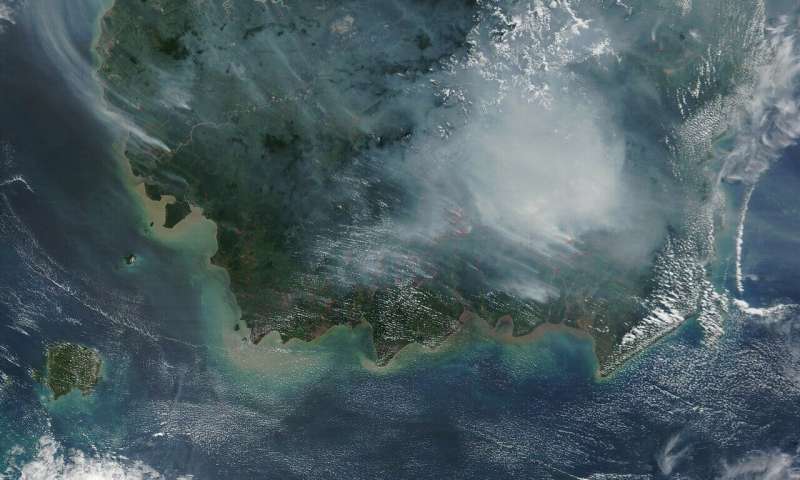Credit: CC0 Public Domain
While prescribed burning of landscapes reduces the risk of bushfires, the health impacts are not widely appreciated and need to be better incorporated into the risk management of burn-off activities, according to the authors of research published online today by the Medical Journal of Australia.
Nicholas Borcers, a Ph.D. candidate at the Menzies Institute for Medical Research at the University of Tasmania, and colleagues analyzed National Environment Protection Measure reports for Western Australia which identified days during 1 January 2002—31 December 2017 on which atmospheric particulate matter levels exceeded air quality standard levels, and classified them according to the most frequently reported sources of pollution: prescribed burns, wildfires, and other (crustal particles such as dust, wood smoke, and indeterminate).
During 2002–2017, particulate air pollution exceeded the national standard on 271 of 5844 days (4.6%), including 197 days (73%) attributable to prescribed burns or wildfires.
"We estimated that 41 premature deaths, 99 hospitalizations for cardiovascular problems and 174 for respiratory conditions, and 123 emergency department visits with asthma were attributable to elevated PM2.5 (particulate matter less than 25 μg/m3) concentration," Borchers and colleagues wrote.
"Total estimated health costs were $188.8 million; $97.1 million (51%) was attributable to prescribed burns and $77.7 million (41%) to wildfires. Mean estimated health costs were lower on days affected by smoke from prescribed burns ($703 984) than those affected by wildfire smoke ($1.3 million), although more days were affected by prescribed burns (138) than by wildfires (59).
"The estimated smoke-related costs of wildfires were highest in 2012 ($24.8 million); in many years, prescribed fires often accounted for most health-related costs, peaking in 2017 ($24.1 million)."
Co-author and fire ecologist, Professor David Bowman said that although the impacts of smoke from individual prescribed fires was much lower than that associated with severe bushfires, their cumulative impacts were similar because of the much greater frequency of prescribed burns.
"While prescribed burning reduces the risk of wildfire, better understanding and incorporation of their full health impacts into strategies for reducing the impact of bushfires are needed for sustainable fire management."
More information: Nicolas Borchers Arriagada et al. Exceedances of national air quality standards for particulate matter in Western Australia: sources and health‐related impacts, Medical Journal of Australia (2020). DOI: 10.5694/mja2.50547
Journal information: Medical Journal of Australia
Provided by Medical Journal of Australia (MJA)























